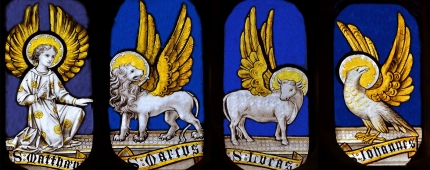Matthew 5:29—Is hell the grave or a place of conscious torment?
Problem: Jesus refers here to the “body” being “cast into hell,” and the psalmist speaks of “bones” being “scattered at the mouth of hell [sheol]” (Ps. 141:7, kjv). Jacob talked about his “gray hairs” being brought down to hell (Gen. 42:38, kjv; cf. 44:29, 31). However, Jesus referred to hell as a place where the soul goes after one dies and is in conscious torment (Luke 16:22–23). Is “hell” just the grave, as the Jehovah’s Witnesses and some other cults claim?
Solution: The Hebrew word translated “hell” (sheol) is also translated “grave” or “pit.” It simply means “unseen world,” and can refer either to the grave, where the body is unseen after burial, or to the spirit world, which is invisible to mortal eyes. In the OT, sheol often means grave, as indicated by the fact that it is a place where “bones” (Ps. 141:7) and “gray hairs” (Gen. 42:38) go at death. Even the resurrection of Jesus’ body is said to be from “hell” (i.e., the grave) where it did not see corruption (Acts 2:30–31).
While there may be some allusions to “hell” as a spirit world in the OT (cf. Prov. 9:18; Isa. 14:9), “hell” (Gk., hades) is clearly described as a place of departed spirits (souls) in the NT. Angels are there and they have no bodies (2 Peter 2:4). Unrepentant human beings are in conscious torment there after they die and their bodies are buried (Luke 16:22–25). In the end those in hell will be cast into the lake of fire with the devil where they will be “tormented day and night forever” (Rev. 20:10, 14–15). Jesus spoke many times of hell as a place of conscious and eternal suffering (cf. Matt. 10:28; 11:23; 18:9; 23:15; Mark 9:43, 45, 47; Luke 12:5; 16:23).
See All Problems
This excerpt is from When Critics Ask: A Popular Handbook on Bible Difficulties (Wheaton, Ill.: Victor Books, 1992). © 2014 Norman Geisler and Thomas Howe. All rights reserved. Used by permission. Click here to purchase this book.














